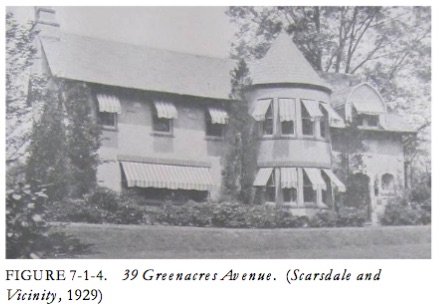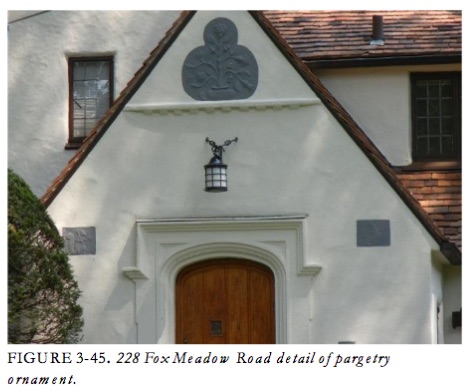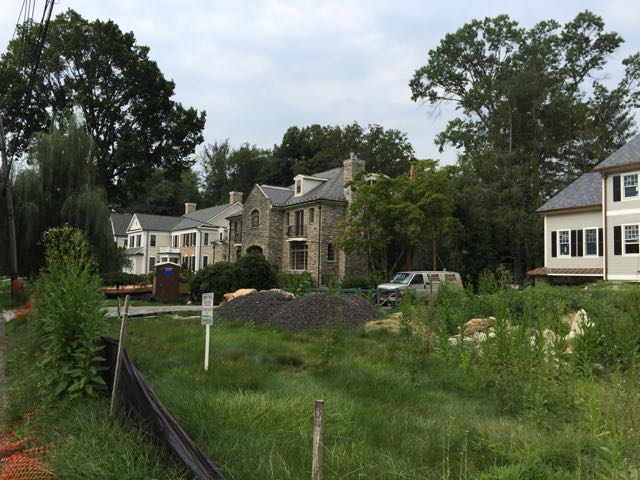It's Time to Put Preservation and Land Use Back on the Agenda at Village Hall
- Tuesday, 10 January 2017 10:08
- Last Updated: Wednesday, 11 January 2017 07:27
- Published: Tuesday, 10 January 2017 10:08
- Joanne Wallenstein
- Hits: 6058
 (This is the opinion of site founder Joanne Wallenstein) Though the current Board of Trustees only has a few weeks remaining before the next election, there's still time to renew discussions about historic preservation, land use and the building code to address an alarming number of teardowns in the past two years.
(This is the opinion of site founder Joanne Wallenstein) Though the current Board of Trustees only has a few weeks remaining before the next election, there's still time to renew discussions about historic preservation, land use and the building code to address an alarming number of teardowns in the past two years.
While the Village government was totally consumed with objections to the 2016 revaluation, all discussion of land use was sidelined. Before the controversy over the revaluation erupted, the Board was in the process of examining building code and historic preservation with the intent of addressing complaints from residents whose neighborhoods are being torn apart. However, discussions about the revaluation prevented the board from considering any new policies while more homes were demolished, subdivisions approved and oversized homes built, creating crowding and stress on our infrastructure.
Here are a few items that were being examined and can now be revisited:
In the Cultural Resources Survey produced by Li/Salzman architects  and architectural historian Andrew S. Dolkart in 2012, the architects produced a list of 68 individual homes and buildings that they believed were worthy of preservation, and defined 12 study areas or "groups of buildings that give a distinctive character to the Village." They said these study areas, "include groups of buildings of high quality and with architectural integrity relating to their original design, create cohesive neighborhood ensembles," that have the potential to be historic districts.
and architectural historian Andrew S. Dolkart in 2012, the architects produced a list of 68 individual homes and buildings that they believed were worthy of preservation, and defined 12 study areas or "groups of buildings that give a distinctive character to the Village." They said these study areas, "include groups of buildings of high quality and with architectural integrity relating to their original design, create cohesive neighborhood ensembles," that have the potential to be historic districts.
The Village Government never took further steps to preserve either the individual properties or districts, and should now renew discussion of this vital issue.
In 2015, the Board of Trustees passed a six-month moratorium on the use of gravel surfaces to meet lot coverage requirements as a means of limiting the size of homes and auxiliary structures on village properties. Because gravel could not be counted as a pervious surface, it limited the installation of impervious surfaces such as pools, tennis courts, patios and long driveways that count in the lot coverage calculation. However, it was very unpopular with a group of vocal builders, who persuaded the trustees to let it lapse. At the time, Trustee Carl Finger said, "There is little doubt that expansion and overbuilding of lots must be faced if we are to maintain the community aesthetic. The combination of teardowns and expansions infringe on the streetscape, land, open space, and light."
Lot coverage laws continue to be a means of limiting home size, and this is another topic that should be revisited by the Board of Trustees.
Also to be reviewed are the floor area bonuses to builders who include certain features in new homes. These bonuses can add an additional 1,500 square feet of space to a 3,500 square foot home, greatly increasing it's bulk. The bonuses were concessions to builders at the time the Floor Area Ratio code was passed, but they seem to have had some unintended consequences.
Here are the details from a 2015 article on Scarsdale10583 about exemptions to the floor area ratio (FAR) requirements that are outlined in section 310-103 of Village code.
"Local builders and architects have grown adept at using these exemptions to build homes that are far larger than the ones the trustees originally envisioned when they enacted this code in 2003 and 2008.
The exemptions allow some full basements, dormered attics, garages and the space above them all to be exempt from the maximum floor area rules.
For instance, many of the new homes have front facing garages with rooms above the garage. In this case both the garage and the room above it are exempt. If a typical two-car garage is 20 x 20 feet, the space above it could be 400 square feet, and that space is exempt from the FAR.
 For basements, if the foundation wall of the basement is not more than 3 feet above grade on the front of the house, the entire basement does not count in the calculation. That means that if a house is on a sloped property, it may have a full finished basement with full-length windows on the side and back of the house.
For basements, if the foundation wall of the basement is not more than 3 feet above grade on the front of the house, the entire basement does not count in the calculation. That means that if a house is on a sloped property, it may have a full finished basement with full-length windows on the side and back of the house.
The area under dormered roofs on the third floor of a house does not count either – if builders extend the dormers for less than 1/3 of the linear footage of the front, and set the dormers beyond 5-feet of the sidewalls on the back. This allows third floor spaces that add considerable square footage to a house."
In my view, it would relatively easy to strike these bonus provisions from the code, thereby scaling back permissible home sizes.
The trustees could also consider barring any more subdivisions. The Village continues to approve subdivisions of home lots to permit two and sometimes three homes to be built in place of one. This causes additional curb cuts, limits available street parking and puts stress on neighbors. With so little open space already, perhaps it's time to limit subdivisions?
Lately builders have been constructing houses on steeply sloped properties by excavating rock and building tall retention walls to create flat backyards. The excavation of rock ledges causes a change in the topography of the neighborhood and can lead to issues with slides and water runoff to neighbors.
Current Village Code Chapter 277-2 permits rock removal, saying, "A permit for excavation under this chapter shall be granted by the Village Engineer only if the Planning Board determines that the proposed excavation will not impair the usefulness of the property involved or any surrounding properties for the purposes for which zoned, will not interfere with or overload any existing or planned drainage facilities of the village, will not endanger any road, street or highway within the limits of the village and will not produce or enlarge areas from which water will not drain." Currently the code does not limit the amount of rock that can be removed or the length of time that rock removal can occur. Rock removal can be loud and disruptive and perhaps the trustees should consider limiting how much rock can be removed and how long the contractor has to remove it.
Trustees could consider revising laws about rock removal and excavation as well as further limit the height of retention walls that obstruct views and sometimes cause neighbors to end up looking at stonewalls out their windows. Current code limits retaining walls to five feet in front of a house and four feet in a side yard but permits walls of up to seven feet in rear yards if it's more than 50 feet from the street.
In addition to these code changes, the Village should also  consider using the fees that have already collected from the subdivisions to buy back open space. There are many privately-owned tracts of land where homes have been demolished to reduce property taxes while the builder awaits a new buyer. Why not buy back some of these lots and create pocket parks?
consider using the fees that have already collected from the subdivisions to buy back open space. There are many privately-owned tracts of land where homes have been demolished to reduce property taxes while the builder awaits a new buyer. Why not buy back some of these lots and create pocket parks?
In my view, by passing preservation laws, limiting the size of new homes, ending subdivisions, re-examining Village building code and buying vacant lots the Village can do a lot to preserve historic homes, maintain open space, discourage overbuilding and safeguard the character of the Village for generations to come.










